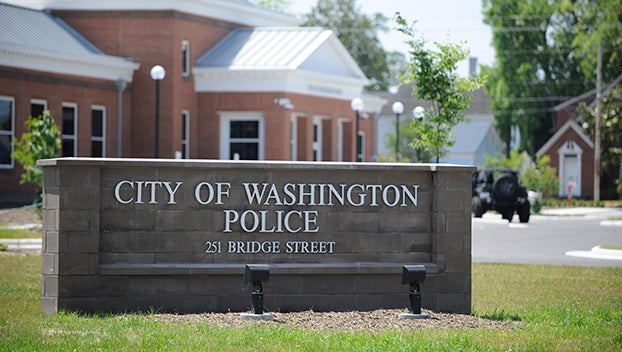Wait continues for testing in animal attack investigation
Published 7:36 pm Wednesday, December 4, 2019

- Brenda Hamilton
A nearly 10-month-long investigation into the Feb. 15 animal attack that caused the death of Pantego teacher Brenda Hamilton remains ongoing this month, as law enforcement and county officials await the results from a second round of evidence testing.
Much of the physical evidence from the early-morning attack on Indian Run Road in Pantego remains in the custody of Illinois-based Microtrace LLC, one of the nation’s most highly-regarded firms in the field microscopic analysis. Although initial testing of the evidence at Western Carolina University revealed only DNA from domestic dogs, it remains unclear what type of animal attacked Hamilton.
At Monday’s meeting of the Beaufort County Board of Commissioners, commissioners and county staff heard an update from Beaufort County Sheriff’s Office Chief Deputy Charlie Rose on the status of the evidence and testing at Microtrace. Rose told commissioners that the evidence has already gone through several layers of testing and that investigators have been in touch with the company on a weekly basis.
The evidence has been with Microtrace since August, which was also marked the last meeting of a county committee formed to move the death investigation forward. According to county Manager Brian Alligood, it is unclear when the evidence and the results of the tests will return.
“The agreed upon plan is that once the fiber evidence makes its way back to Beaufort County all the evidence will then be sent to the University of Florida for a fresh look,” Alligood wrote in an email. “A committee meeting may occur when the evidence comes back from Microtrace and before it all heads to Florida, if there is a need.”
County Commissioner Hood Richardson, who serves on the investigation committee, says he has concerns about the involvement of state and federal agencies in the case, and questioned the overall pacing of the investigation during Monday’s meeting.
“Things moving along is becoming an issue,” Richardson said during the meeting. “It won’t be long before we’ve been into this thing for a year. It’s kind of dragging.”
Rose, while not outright defending Microtrace, said during the meeting that in terms of forensic investigations, analysis of evidence could take some time.
“I understand the concerns on that,” Rose said. “I will say, in my experience of law enforcement and forensics, is that this pace is not slow. … (Microtrace) is world-renowned in their field and I would say they’re going to be as methodical as they can and try to do it right, because their reputation is on the line if something is found later by someone else. I just try to urge, as much as I can, patience as far as this goes.”
The University of Florida’s Maples Center for Forensic Medicine, a facility that has considerable experience with animal attacks, will be the next stop for the evidence, should the Microtrace examination not yield concrete results. During the meeting, Commissioner Frankie Waters asked if photos taken by North Carolina Wildlife Resources, which initially led the investigation, would be included in the evidence sent to UF.
“The idea is the University of Florida will be able to look at the entire case file, which should include the information that was gathered from (N.C.) Wildlife,” Rose said.





